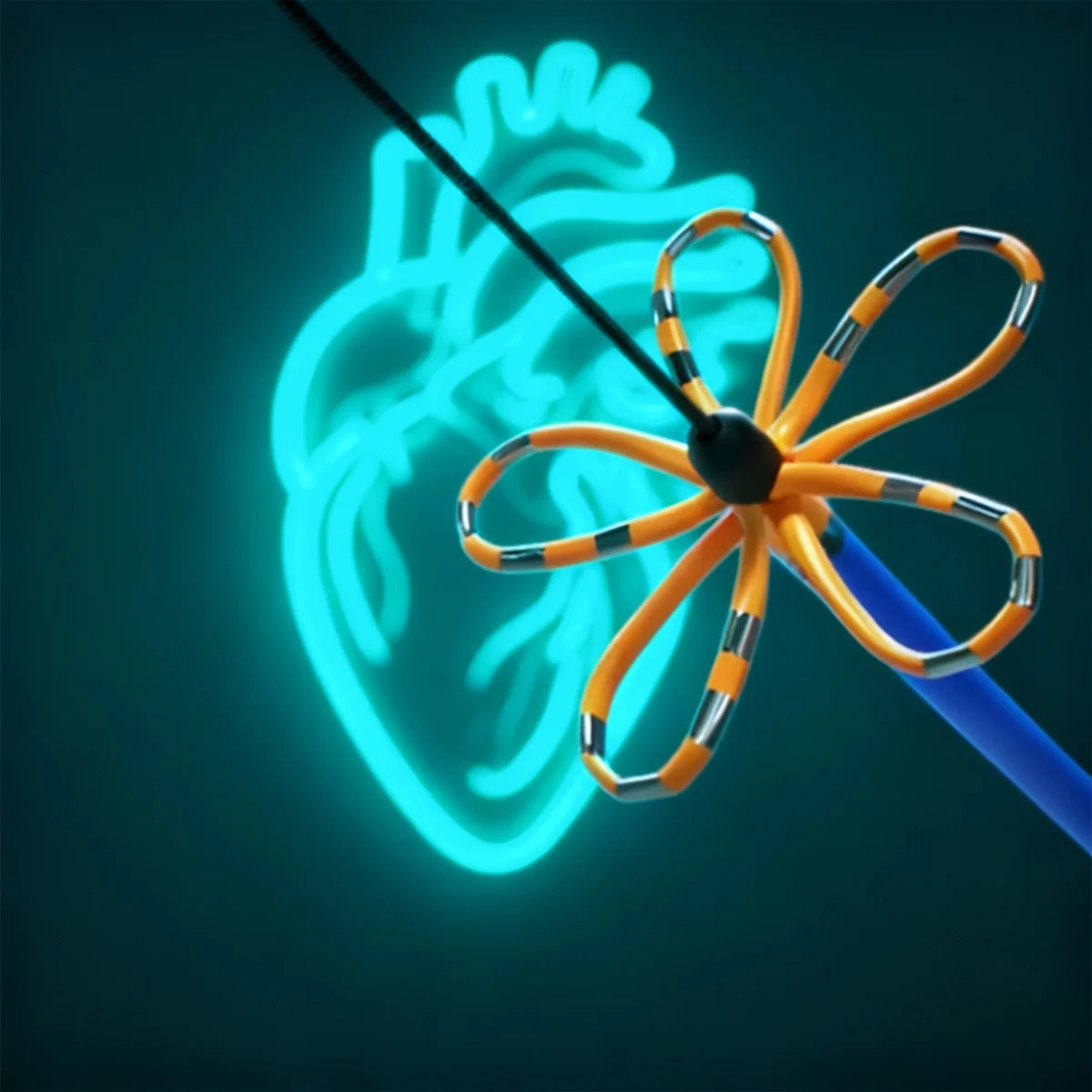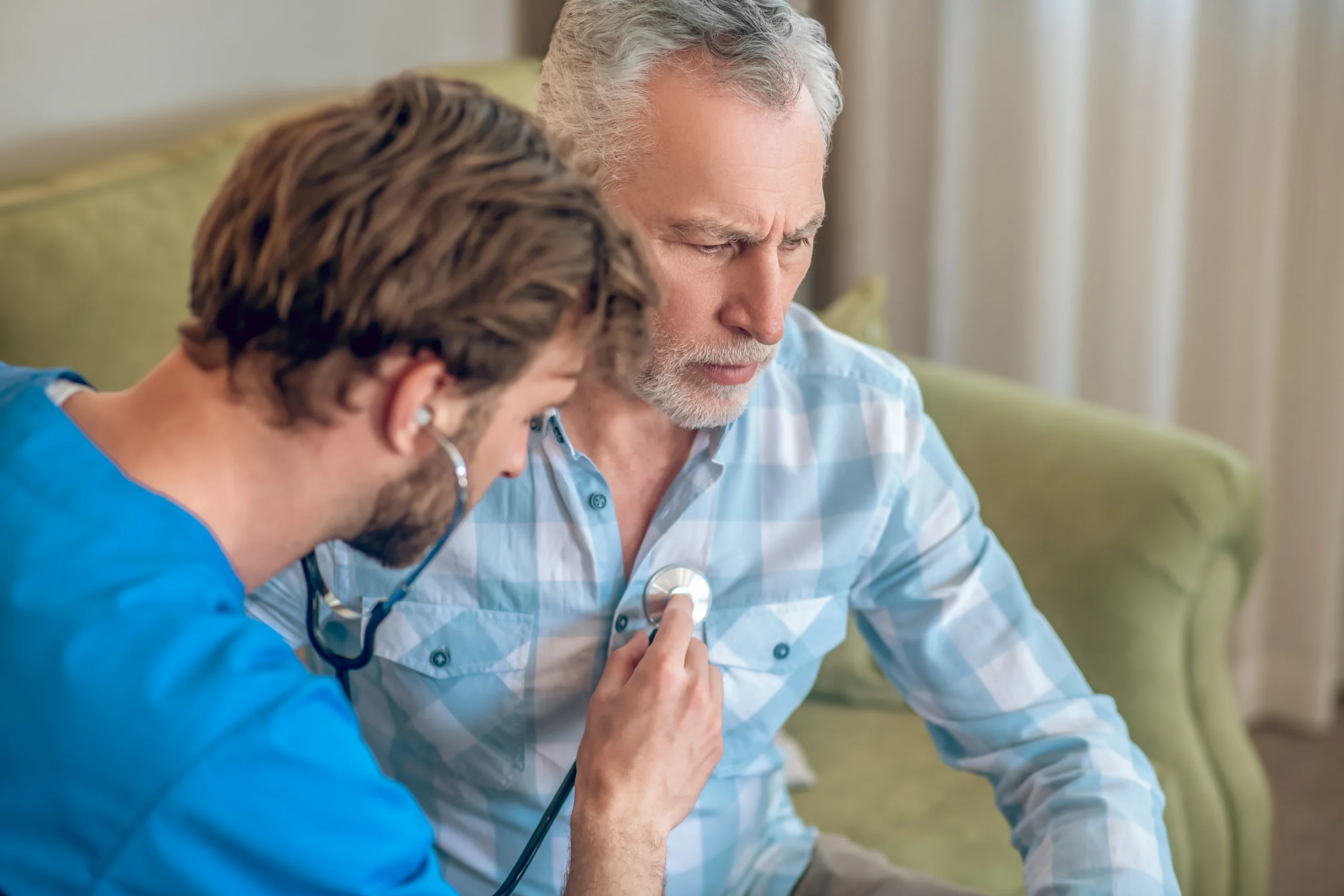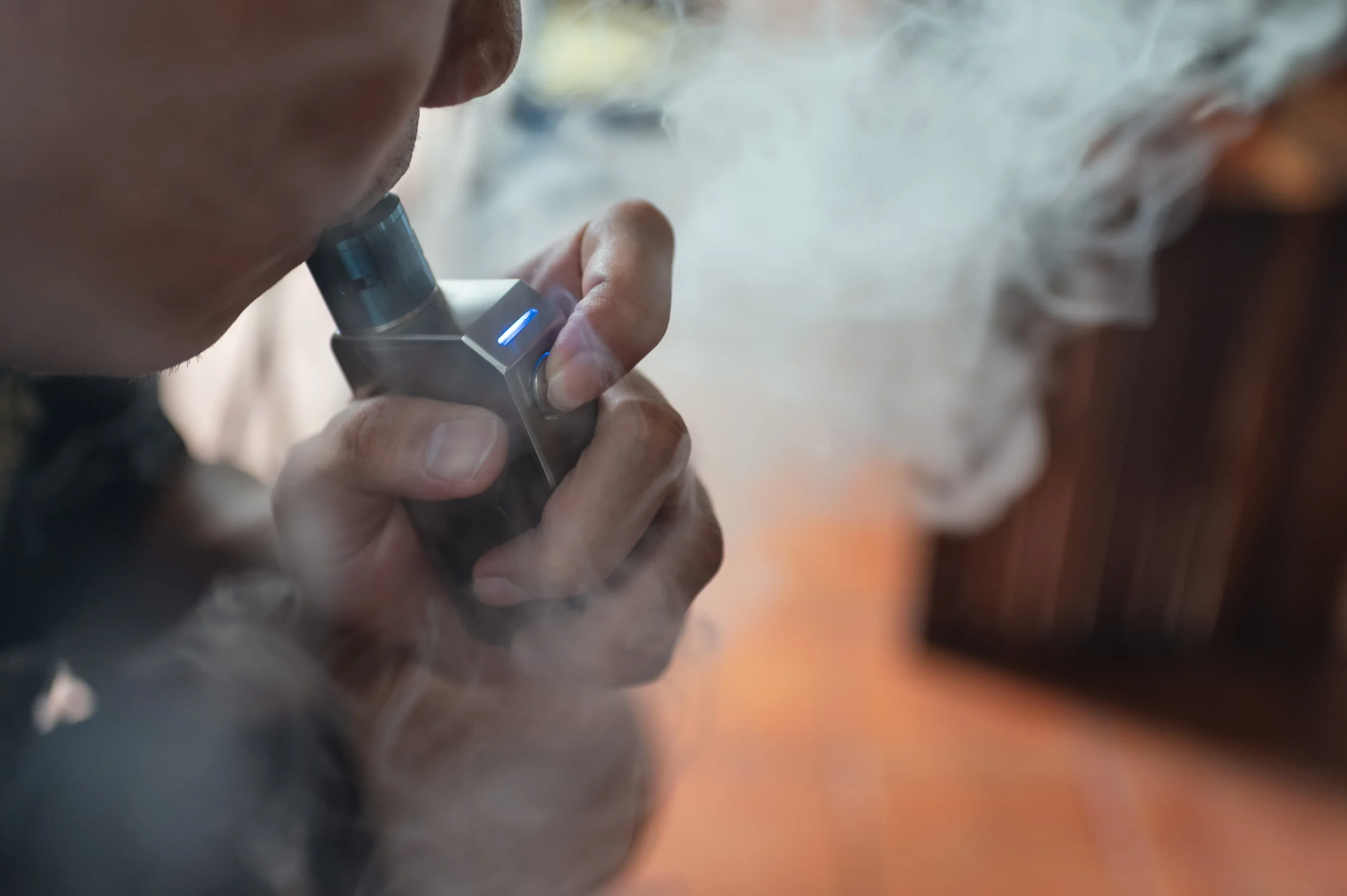Table of Contents
Cardiac ablation is one of the safest and most effective modern treatments for common heart rhythm problems like atrial fibrillation and supraventricular tachycardia (SVT).
But how serious is the procedure, what are the implications of having one, and how long does it take to recover from? Understanding how cardiac ablation works – and what you should and shouldn’t do before and after – can help you give yourself the best chance of a great result and a swift recovery.
If you or a loved one needs to have a cardiac ablation, Heart Rhythm Cardiologist can help you get the advice and treatment you need. Dr Lyne is one of Ireland’s most experienced cardiologists and a leading expert in cardiac ablation. Get in touch today for a consultation.
What is Cardiac Ablation?
Cardiac ablation – also known as heart ablation or radiofrequency ablation – is a procedure for treating irregular heartbeats (arrhythmias). Irregular heartbeats are caused by faulty electrical signals in the heart. Cardiac ablation uses thin wires (catheters) to scar the area of heart tissue where the signals go wrong. This breaks the faulty electrical circuit and helps the heart return to a normal rhythm.
You can get much more detail about the ablation process in this blog on “AFib”, one of the most common types of arrhythmia: What to know about the atrial fibrillation ablation procedure.
Symptoms After Cardiac Ablation
Arrhythmias can cause a range of unpleasant symptoms, including palpitation, a fast heart rate and extra heartbeats (ectopic beats). One of the goals of ablation is to stop these symptoms from occurring, and most patients find that’s exactly what happens.
That said, it’s quite common to continue to experience symptoms immediately after the operation and even for several weeks post-surgery. This is commonly known as “the blanking period”. It doesn’t necessarily mean the procedure has failed; it can simply take time for the rhythm to settle down as the heart tissue heals.
Some people experience temporary chest discomfort as the heart recovers from the operation, but this is rare and usually disappears after a week or so.
Cardiac Ablation Recovery
Standard cardiac ablation is a minimally invasive operation; all the devices used in the procedure are inserted and removed through a vein rather than by open-heart surgery. All the same, it still takes time for your body to recover from an ablation, both the puncture site and the heart tissue that’s being carefully scarred for the treatment. To aid your recovery after ablation, you’ll need to:
- Rest – for a few days at least after the procedure (the team will advise you on this)
- Avoid heavy lifting – for at least two weeks
- Avoid strenuous activity – for at least two weeks
Factors That Influence Cardiac Ablation Recovery
It sounds obvious, but improving your overall health will also give your body the best chance of a good, long-term recovery after the ablation. Any lifestyle improvements you introduce now can have a significant impact on your heart health and help to prevent further problems. The Irish Heart Foundation has the following advice for patients considering an ablation:
- Avoid stimulants such as caffeine, like in coffee, alcohol, and nicotine from smoking. These can trigger an irregular heart rate.
- Have your blood pressure and cholesterol monitored regularly and keep them under control.
- Be active. Check with your doctor or nurse about a safe and reasonable level of activity or exercise before you start.
- Reduce stress and find ways to manage or control any stress you cannot avoid.
- Eat heart-healthy foods and maintain a healthy weight
- Go for regular check-ups. They will help you maintain your quality of life.
General Timeline of Cardiac Ablation Recovery
Most patients recover quickly after their ablation procedures. Some people even feel well enough to return to normal activities and work after a few days of rest. For others, it can take considerably longer – and up to 3 months before their symptoms settle. The general recovery timeline after a heart ablation looks something like this:
3-6 hours after the ablation procedure – lying down in the recovery area
24 hours – going home, either the same day or the next morning
1 week – resting at home and avoiding strenuous activity
2 weeks – returning to walking and everyday activities
10 weeks – confirming the procedure has worked properly
3 months – feeling free of irregular heartbeat symptoms
12 months – being discharged by your doctor
Keep in mind that you shouldn’t drive for at least 48 hours after your ablation procedure.
Tips for a Smooth Cardiac Ablation Recovery
Although cardiac ablation is minimally invasive, it still takes a physical toll on the body. For instance, if you’re going to be conscious during the procedure, it will take a few hours for the sedative effects to wear off. (It can take up to 48 hours if you’re having a general anaesthetic.)
Your body also needs time to heal from the incisions used for the catheters and from the scars that we create in the heart tissue to restore your natural rhythm. The best way to encourage a successful outcome from your ablation is to be careful and intentional in your approach to the recovery period.
Activity and Rest Post-Cardiac Ablation
Rest is one of the keys to a good recovery from ablation. You won’t be able to drive home after the operation, so you’ll need someone to collect you from the hospital. Once home, you’ll want to rest up for the next few days. Most people take a few days off work – and up to a fortnight if they have a physically demanding job, such as nursing or manual work. During this time, it’s important to avoid strenuous activity and heavy lifting. When you feel well enough to get back to everyday activities and exercise, it’s best to build up gradually. Most patients find they’re able to go for brisk walks by week two.
It’s common to get some bruising in the puncture site where the catheters were inserted (usually the groin, though sometimes the arm, leg or neck). Most people don’t experience any pain after the procedure. If you do feel some pain or discomfort, you may like to take some simple painkillers; the soreness usually only lasts for a week at most. You should be able to remove your dressing after 24 hours, but it’s important to keep the wound clean and dry over the next few days, so you’ll need to avoid swimming or taking a bath for the first week.
You can find out more about resuming activities after the procedure on our website’s Ablation page: see What happens after my ablation?
Diet and Medication After Cardiac Ablation
You may need to avoid eating or drinking before your ablation – we’ll let you know about this when you come in for your preoperative assessment. When the operation is finished, you should be able to eat and drink normally. But you should avoid alcohol for at least 24 hours.
Medication for heart rhythm problems varies a lot from patient to patient. It’s possible that you’ll need to stop taking certain medicines before and after the ablation. Or you may be prescribed a new, temporary course of medicines before and after the procedure, such as blood thinners to help prevent blood clots. Again, these are things we’ll discuss with you in detail before the procedure.
Follow-Up Care and Monitoring
When you leave the hospital after your cardiac ablation, the team will give you instructions about how to monitor and care for yourself at home, when you will be able to resume physical activities, and so on.
Although most people recover quickly after ablation, it’s important to keep an eye on your symptoms and let the medical team know if you experience any new or unusual ones or if your symptoms get worse (see What to Watch For During Cardiac Ablation Recovery, below).
After you’ve been discharged from hospital, the Heart Rhythm Cardiologist team will contact you to arrange a follow-up appointment. This is usually around 6-8 weeks after your ablation. It’s an opportunity for us to check your progress and answer any questions you may have. You will probably have a heart test, such as an electrocardiogram (ECG), at this appointment.
Cardiac Ablation Success Rate
As the Irish Heart Foundation points out, most patients find ablation is a very effective treatment for their arrhythmia: “The success rate of ablation for the great majority of fast heartbeats is 95 to 98%,” they explain.
That said, the outcome can vary according to the type of rhythm problem you have. While conditions like supraventricular tachycardia (SVT) and Wolff-Parkinson-White syndrome usually respond very well to ablation, the success rate can be lower for problems like atrial fibrillation, atrial tachycardia and ventricular tachycardia. If your arrhythmia persists or comes back, you may need to have a second procedure.
You can maximise your chance of a successful recovery from ablation by following the guidance and taking good care of your body in the weeks afterwards. Don’t try to rush back into work before you’re ready. Avoid heavy lifting for at least the first week. Introduce daily exercise gradually, according to your care plan. And keep up with your appointments while continuing to take any medicines you’ve been prescribed.
What to Watch For During Cardiac Ablation Recovery
Cardiac ablation is generally very safe, and most people don’t experience any serious complications after the procedure. But it’s good to be aware of the potential risks and side effects.
Common Side Effects
Some people experience mild side effects from the procedure. These include:
- Drowsiness – you will feel drowsy until the effects of the anaesthetic or sedative wear off
Bruising – it’s relatively common to get a bruise where the catheter was inserted; the bruise can sometimes spread further down the leg, especially if you’re taking anticoagulants - Small lump – some people get a pea-sized lump (a haematoma) at the puncture site in their groin; this should go down over the following days
- Heart flutters – it’s pretty common to experience mild symptoms, like palpitations or temporary episodes of AFib, for several weeks after an ablation; these usually settle down as the heart heals
Serious Symptoms That Require Immediate Attention
Certain symptoms need to be investigated if you experience them after your ablation. While it’s reasonably common to get a small lump at the puncture site, you should seek medical attention if the lump gets more swollen or becomes very red or if you experience excessive bleeding from the wound or start to feel feverish.
Though it’s also common to experience temporary periods of AFib or palpitations for the first few weeks and months after ablation, you should see a doctor if the palpitations become more severe or if they last for several hours at a time. If the palpitations are accompanied by other new symptoms like breathlessness, feeling faint, losing consciousness, or chest pains, you should seek immediate medical attention. Signs of stroke (including slurred speech, drooping in your face or weakness in your arm) should be treated as a medical emergency.
Getting symptoms after ablation isn’t always an emergency; sometimes, they might simply mean that you need to change or adjust your medication, for example. This is something we can help you with if you call the clinic.
Cardiac Ablation with Dr Lyne
Are you considering cardiac ablation for yourself or a loved one – or are you concerned about how the process works and whether it’s right for you? If so, we’re here to help you get the advice and treatment you need. Dr Lyne is one of Ireland’s foremost experts in ablation treatment for heart rhythm problems. He was one of the first cardiologists in Europe to pioneer the new “pulsed field ablation” for AFib. (You can learn more about it in this blog: New “pulsed energy” treatment for atrial fibrillation.)
Whatever your state of health or symptoms you’re facing, we can provide the full range of tests, medication and procedures to help you deal with symptoms and manage your heart rhythm condition.
If you’d like to book an appointment to discuss ablation, please get in touch with Heart Rhythm Cardiologist today. It’s quick and easy to book a consultation with Dr Lyne on our website. Or you can contact us by phone and email. Whatever you need, the team will be delighted to hear from you.
Cardiac Ablation Recovery: FAQs
Is cardiac ablation a serious surgery?
Standard ablation using catheters is a relatively minor surgery. Because the surgical devices travel up to your heart through a vein (usually in the groin but sometimes in the arm, leg or neck), it’s regarded as a “minimally invasive” operation, and the risks and recovery time are less than with open surgery.
How long does an ablation take?
It depends on the type of heart rhythm problem you have, the complexity of the procedure you need and whether you’re having a local or general anaesthetic. Some catheter ablations are pretty quick to perform, while others can take several hours. The usual length of ablation is around two to four hours. Most patients are able to go home the same day as their procedure, or after a night in hospital.
When can I go back to work after my ablation?
It depends on the type of work. If the ablation is a short, simple one and the job doesn’t involve strenuous activity, some doctors advise returning to work after 48 hours’ rest. Other patients prefer to take around a week off to recover. If you have a manual job, it may be necessary to rest for at least two weeks before returning to work. The medical team will advise you on how long you should stay off work.
Will I be able to drive after the ablation?
Not immediately. You aren’t allowed to drive a car for at least 48 hours after the operation. If you feel pain or discomfort around the puncture site, it may be better to wait until the wound has healed.
How do I know if the ablation has worked?
It often takes some time before the effects of the ablation reduce symptoms and return your heart to a normal rhythm. This usually becomes clear after around eight to 10 weeks of cardiac ablation recovery. If your symptoms continue or come back, it may be necessary to repeat the procedure or consider a different type of treatment. However, most patients find that ablation makes a big difference in their condition.






